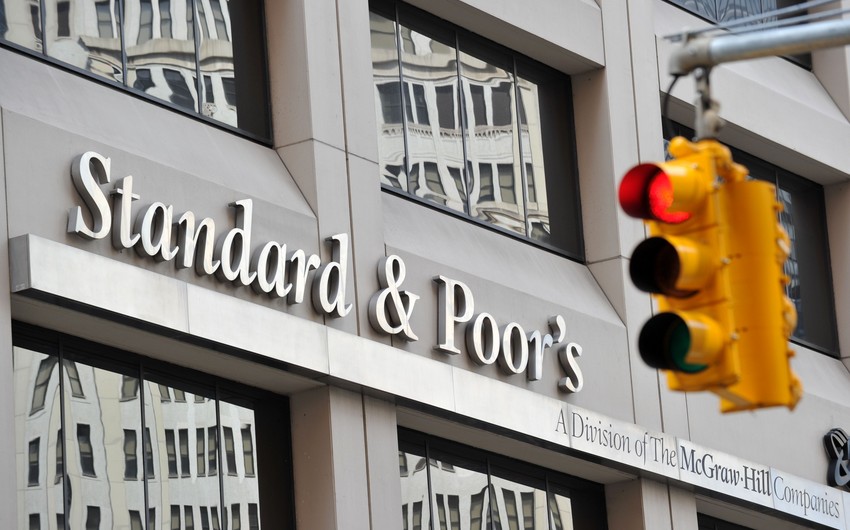"Over the medium term, we expect current account surpluses to average under 6% of GDP, compared with the estimated 8.8% of GDP in 2019," S&P international rating agency said in its report on Azerbaijan.
"Despite gradually increasing gas exports from the Shah Deniz field, current account receipts will be constrained by our assumption of lower hydrocarbon prices and broadly stable oil production.
"Reduced import bills associated with lower oil-related services and investment in fixed capital will, however, support external surpluses.
"Azerbaijan's strong external balance sheet will remain a core rating strength, underpinned by the large foreign assets accumulated in the sovereign wealth fund, SOFAZ. We estimate external liquid assets will surpass external debt by 105% of current account payments in 2020 and average about 112% over 2021-2023, supported by recurrent external surpluses. Azerbaijan will remain vulnerable to potential terms-of-trade volatility.
"Azerbaijan will remain vulnerable to potential terms-of-trade volatility. Nevertheless, in our view, its large net external asset position will serve as a buffer to mitigate the potential adverse effects of economic cycles on domestic economic developments. With that said, our assessment on Azerbaijan's external position remains somewhat constrained by data inconsistencies because of persistently high errors and omissions of the balance of payments and only partial data for the international investment position," the agency said.
According to the report, the agency expects fiscal expenditure will increase to about 36% of GDP this year from an estimated 32% in 2019 but remain stable in the remainder of the forecast horizon.
"We do not expect the launch of SDII and its expansion over the next few years will have a substantial effect on fiscal revenue. This is because Azerbaijan will mostly use the profits from planned gas exports to pay down the debt of the Southern Gas Corridor--a government special-purpose vehicle that financed a substantial part of the project and received foreign financing with government guarantees. Nevertheless, we expect the government's ongoing efforts to streamline nonoil revenue administration and tax compliance, coupled with new tax policy measures, will gradually foster revenue mobilization. Mirroring developments on the external side, Azerbaijan's fiscal surpluses will narrow markedly over 2020-2023. We project that the general government surpluses will average 1.8% of GDP through 2023 compared with the estimated surplus of 8.1% in 2019. Despite decreased hydrocarbon revenue compared with the previous year, higher revenue from SOFAZ's external assets supported strong fiscal performance in 2019.
"This will be largely spurred by higher recurrent spending and stable nominal GDP in 2020. In our view, recent increases in wages, pensions, and other social protection payments will be partially offset by the reallocation of expenditure from public investment in fixed capital. Nevertheless, we also expect the ongoing adoption of fiscal rules that place limits on the pace of expenditure growth will help maintain fiscal control in the medium term.
"Following de-pegging in December 2015 and a period of float, since April 2017, the exchange rate has stabilized at 1.7 manat per U.S. dollar, supported by authorities' regular interventions in the foreign-exchange (FX) market. In our view, should oil prices become less favorable, the authorities will allow the exchange rate to adjust to avoid a similar substantial loss of FX reserves to that seen in 2015.
"We project government net assets will average 55% of GDP over our four-year forecast horizon. We only count SOFAZ's external liquid assets in our calculations; we exclude the 17% of GDP equivalent exposures that might be hard to liquidate if needed, such as the fund's domestic investments and certain equity exposures abroad. Compared with many peers, for example in the Gulf Cooperation Council, Azerbaijan is considerably more transparent in the publication of detailed information on categories of investments held by SOFAZ.
"We forecast the stock of general government debt as a share of GDP will be stable, at under 33% on average in 2020-2023. However, there will be a marginal increase in government debt in absolute terms from 2021 to finance budget deficits at the central government level. After 2015, the stock of general government debt expanded at a much faster pace than headline budgetary balances imply. This was mainly due to the government's assumption of $2.3 billion of liabilities from International Bank of Azerbaijan (IBA) in 2017 and our treatment of the sovereign guarantee on AqrarKredit loans from the CBA as part of general government debt. We believe that most risks to the sovereign from the weak banking system have already materialized, so we see additional contingent liabilities as limited. Even though the financial system remains weak, we forecast it will gradually strengthen in tandem with improved growth.
"Following de-pegging in December 2015 and a period of float, since April 2017, the exchange rate has stabilized at 1.7 manat per U.S. dollar, supported by authorities' regular interventions in the foreign-exchange (FX) market. In our view, should oil prices become less favorable, the authorities will allow the exchange rate to adjust to avoid a similar substantial loss of FX reserves to that seen in 2015.
"However, we believe the inflexible exchange arrangement constrains the CBA's ability to conduct monetary policy. The central bank's ability to influence domestic monetary conditions and economic development is further constrained by still-elevated resident deposit dollarization, which remains high at about 55% despite falling from peak levels of 76% in 2015. In addition, Azerbaijan's local-currency debt capital market remains small and underdeveloped and CBA's operational independence remains limited," the report says.


